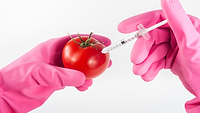International Regulations on Genetically Modified Organisms in Food

Fifteen years ago, a survey conducted in college students compared consumer acceptance of genetically modified organisms (GMOs) in Japan, Norway, Taiwan and the U.S., and concluded that Americans were more willing to consume foods containing GMOs than their international counterparts. Most participants in the survey would like to have mandatory labeling on GMOs, and were willing to pay extra for non-GMO food.[1] Since the regulation of GMOs were first established in the early 1990s in major regions of the world, countries have gone through initial formation, gradual modification and evolvement of their own rules over the years. This article summarizes what will be published in the June-July issue of Food Safety Magazine.
U.S.: Demands for Mandatory Labeling
On March 16, the U.S. Senate blocked a bill to nullify the mandatory labeling of GMOs at state or local level, indicating that the debate on whether to label GMOs voluntarily or mandatorily has not ended yet.[2] Several states have required mandatory labeling of GMOs before this bill, including Vermont, Connecticut, Maine and others.[3,4]
American consumers have been increasingly expressing their concerns and demanding mandatory GMO labeling. Throughout 2015, the U.S. drove the launches of GMO-free claims worldwide; the U.S. accounted for 43 percent of global launches, even ahead of European Union (EU) for 4 percent. In the past, there has been limited consumer resistance to GMOs in the U.S. But in recent years, dairy companies, as well as non-dairy drink manufacturers using plant source protein, have been expressing strong interest in non-GMO labeling.[5]
According to the Grocery Manufacturers Association, 70–80 percent of processed food that Americans consume daily contains genetically engineered plants. If mandatory labeling on GMOs becomes instituted, as is the current situation in the EU, Japan and New Zealand, the U.S. food industry would be hugely impacted; most foods with GMOs may have to be eliminated from the shelf due to consumer aversions. EU-
EU: Restrictive Regulatory Practices
Unlike the U.S., a major exporter of GMOs and leader in the biotechnology field, Europe remains conservative on GMOs. GMOs in the EU are regulated at two authoritative levels, and EU member states have individual rules and regulatory agencies within their territory.[6]
The reasons for the EU’s cautionary altitude on GMOs lies in several different economic, political and societal reasons. Economically, limiting the sale of GMOs also protects domestic agricultural business by setting higher trade barriers. Politically, environmental and often “anti-GMO” groups have been taking a larger role in policy making. Finally, the rising consumer demand for “natural” or “organic” has led to a culture of distrust of GMOs. The impact of the EU’s restrictive policy on GMOs not only increases costs for manufacturers but also delays the development of modern biotechnology. Furthermore, other countries considering the EU as a potential export market must wait and see, hoping to mirror policies from these large countries/regions with whom they heavily trade. Some of these “wait-and-see” countries choose to follow the EU as a model, while others may choose to mirror U.S., a representative of GMO “soft” regulating country, to maximize benefits from exporting their crops.[7]
The full version of this article, International Regulations on Genetically Modified Organisms: U.S., Europe, China and Japan, will be published next month in Food Safety Magazine.
Wendan Wang, Ph.D., is an associate scientist at Burdock Group, a food safety consulting firm headquartered in Orlando, FL.
References
1. Chern, WS and K Rickertsen. 2001. “Consumer Acceptance of GMO: Survey Results from Japan, Norway, Taiwan, and the United States.” Taiwan Agric Econ Rev 7(1):1–28.
2. www.reuters.com/article/ususagmolabelingidUSKCN0WI2K2.
3. Hemphill, TA and S Banerjee. 2014. “Mandatory Food Labeling for GMOs.” Regulation 2014–2015:7–10.
4. bigstory.ap.org/article/b57fd671c46d4598abb14046b14c2441/bill-block-state-labeling-genetically-modified-foods.
5. www.nutraceuticalsworld.com/issues/2015-12/view_breaking-news/us-demand-leads-the-way-for-gmo-free-labeling/.
6. Han, Y et al. 2013. “Evolution of GMO Regulations in the European Union and Indications for China. ” Zhejiang Agric Sci 11:1482–1489.
7. Cantley, M. 2012. “European Attitudes on the Regulation of Modern Biotechnology and Their Consequences.” GM Crops Food 3(1):40–47.
>
Looking for a reprint of this article?
From high-res PDFs to custom plaques, order your copy today!





